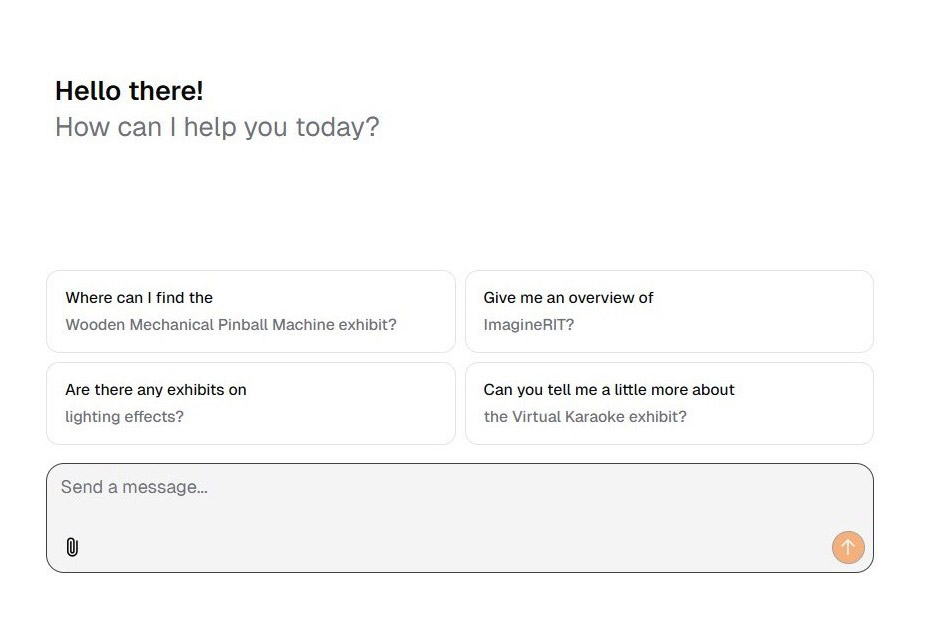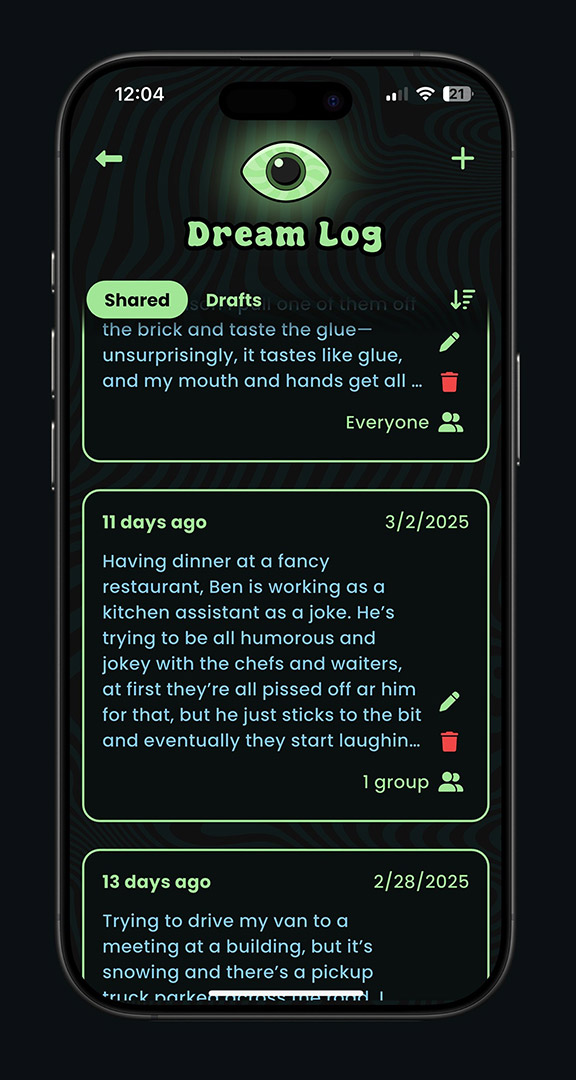Imagine RIT will have artificial intelligence around every turn
If festivalgoers have trouble exploring the more than 430 exhibits at this year’s Imagine RIT, they can now enlist the help of artificial intelligence (AI).
The RIT community has created Imagine RIT Bot—a generative AI chatbot that’s like ChatGPT but focuses on the Imagine RIT: Creativity and Innovation Festival. For example, visitors can ask Imagine RIT Bot to find exhibits where they get to throw things or to plan a route of two robotics exhibits and a musical performance on their way to lunch.
Imagine RIT Bot can be found at the RIT AI Hub Showcase exhibit, amongst several other AI tools created by students, faculty, and staff. The bot is one of the many Imagine RIT projects across campus that will incorporate the emerging technology of AI.
“AI is here to stay and it’s going to change us,” said Christopher Collison, director of RIT’s AI Hub. “AI will enable the creation of different jobs and it will automate certain things, so we should able to spend more time doing the things we truly enjoy. RIT’s mindset is that we need to create and use AI responsibly and for the better.”
Hey Tutor Bot

RIT AI Foundry
RIT experts have created an Imagine RIT chat bot for visitors hoping to learn more about and explore the festival.
At the AI Hub Showcase, visitors can take a lesson with Tutor Bot. It’s an AI-powered tutor that doesn’t just give the answers—like ChatGPT—it helps people learn and study by digging deep in their foundational knowledge.
On the back end, Tutor Bot relies on expert information from RIT faculty members and is built on top of a large language model. The tone of the bot can be modified to teach different audiences—from third graders to college students.
In the future, the AI Hub hopes to make Tutor Bot available to all RIT students. It’s one of the many AI tools RIT is building from the ground up, with ethics in mind.
At Imagine RIT, visitors will take sample courses in chemistry, physics, algebra, survival skills, and making “redstone” in Minecraft. Students working on the tools include Gregory Ojiem, a fifth-year computer science major, Hunter Landolfi, a fifth-year computer engineering major, and Neav Ziv, a third-year computer science major.
Some other AI tools in development will also be available to try, including an advisor bot for scheduling courses and a research concierge bot that creates short biographies about RIT researchers to connect them with potential collaborators.
“We want the public to get involved because AI is for everyone, not just big companies,” said Collison, who is also an endowed professor in the School of Chemistry and Materials Science. “It’s very empowering to do hands-on work with AI—anyone that learns how to use AI, can be a part of it.”
Dreaming of AI

Dreamcatcher
Two RIT students are exhibiting Dreamcatcher, a dream-focused social media platform they are creating. The app uses AI to help users explore their friends’ dreamscapes and investigate similarities between dreams.
Many college students dream of developing the next hot app. Two RIT students are making that happen.
Jonah Witte, a second-year computer science major, and Gabriel Casselman, a second-year motion picture science major, are building a dream-based social media platform called Dreamcatcher. The app lets users share their dreams, explore their friends’ dreamscapes, and uncover connections between them.
Dreamcatcher will be on display and available to download at Imagine RIT. The students are programming this for a fun side project.
“We saw this as an untapped market,” said Witte, who is from Silver Spring, Md. “I’ve always been a big dreamer, and I like telling friends about my dreams. This is a dream journal where you can share with others and compare.”
AI is at the core of the app, which uses a Google embedding model to break up dreams into different numbers and compare them. Users can scroll through their feed to see what others are dreaming about.
“The AI will identify trends,” said Casselman, who is from Santa Barbara, Calf. “Maybe all your friends have a dream about whales on the same night or maybe your friends are appearing in each other’s dreams.”
The students plan to show off a demo of the app at Imagine RIT and share how they made the platform.
“We’re excited to get feedback from people,” said Casselman. “And we’ll keep adding interesting things as we go.”
If you go
Imagine RIT: Creativity and Innovation Festival runs from 10 a.m. to 5 p.m. on April 26 on the RIT campus. The event is free and open to the public. Plan your day on the Imagine RIT website.











